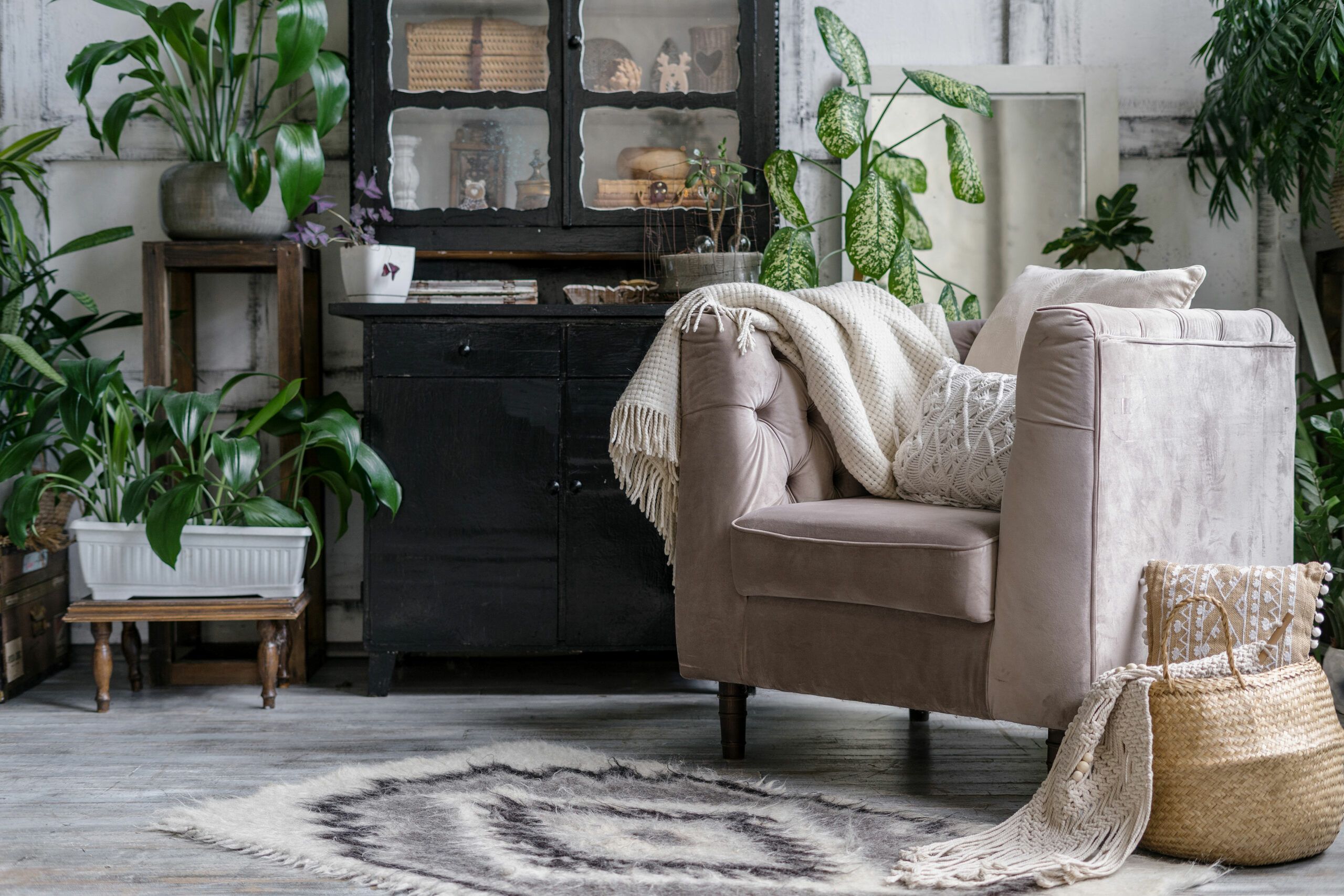If you don’t have a lot of natural light inside, keeping plants healthy and alive can be challenging. Don’t worry, though, because there are plenty of low-light plants that thrive in dimmer conditions. These resilient houseplants add a touch of greenery to your home while also purifying the air and creating a more inviting atmosphere. In this guide, we’ll explore some of the best low-light plants that can flourish in various indoor environments, from shadowy corners to north-facing windows.
What Is a Low-Light Plant?
Low-light conditions typically refer to areas that receive little to no direct sunlight but still have some ambient light. These spaces might include north-facing windows, interior rooms, or areas far from windows. While no plant can survive in complete darkness, the following plants can thrive in low-light conditions.
1. Cast-Iron Plant (Aspidistra Elatior)
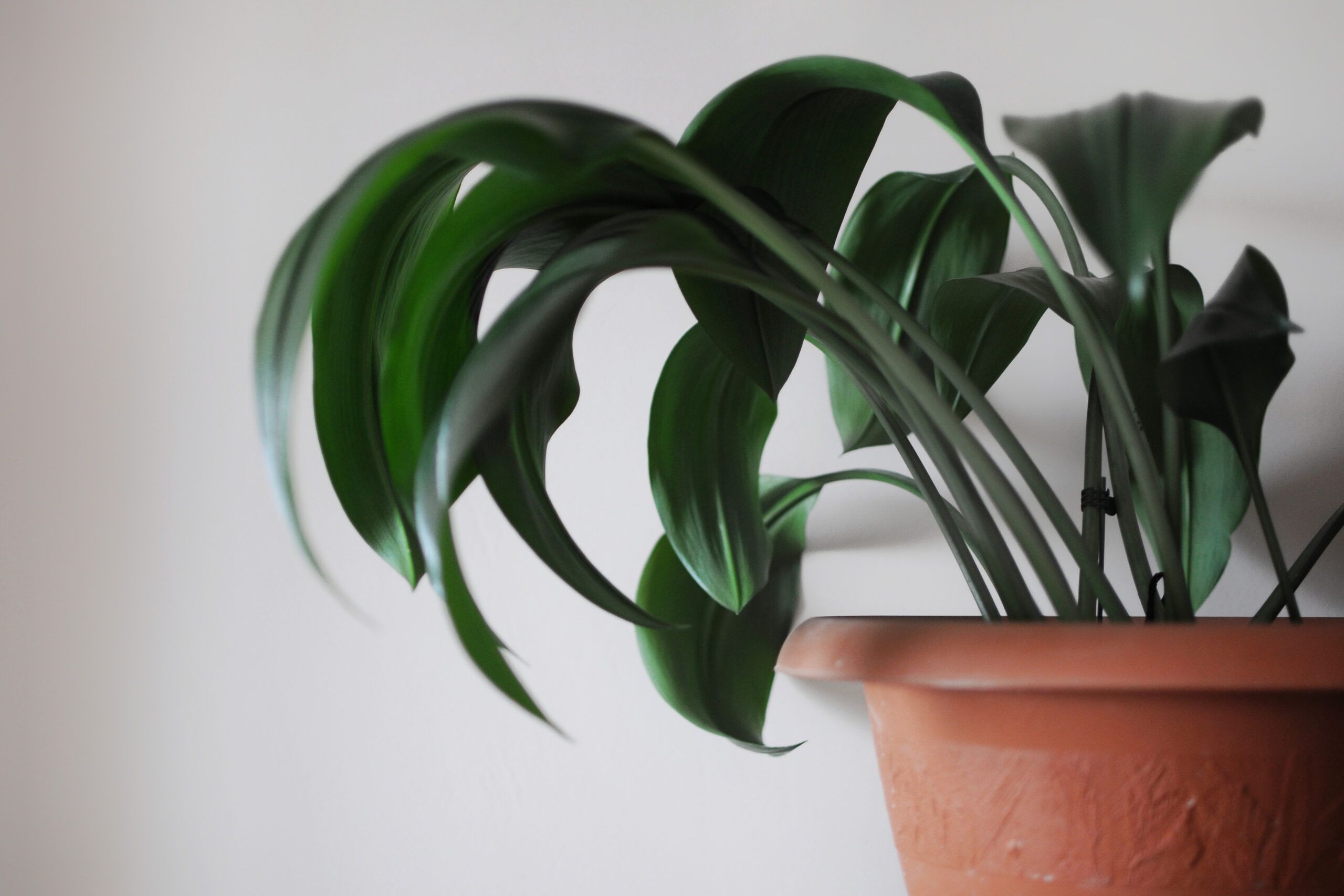
The cast-iron plant lives up to its name with its incredible resilience and adaptability. Native to China and a member of the lily family, this hardy plant can withstand neglect and less-than-ideal conditions. Its dark green leaves and occasional small purple flowers make it an attractive addition to any room.
Key features of the cast-iron plant include the following:
- Can be propagated by division
- Disease- and pest-resistant
- Doesn’t require frequent watering
- Grows to a mature height of about 2 feet
- Thrives in low indoor light
Consider the following tips when caring for your cast-iron plant:
- Place it in a spot with low to moderate indirect light.
- Regularly wipe the leaves to remove dust and help your plant maintain its healthy shine.
- Water sparingly, allowing the soil to dry out between waterings.
This plant is good for beginners or those who occasionally forget about their plants.
2. Lucky Bamboo Plant (Dracaena Sanderiana)
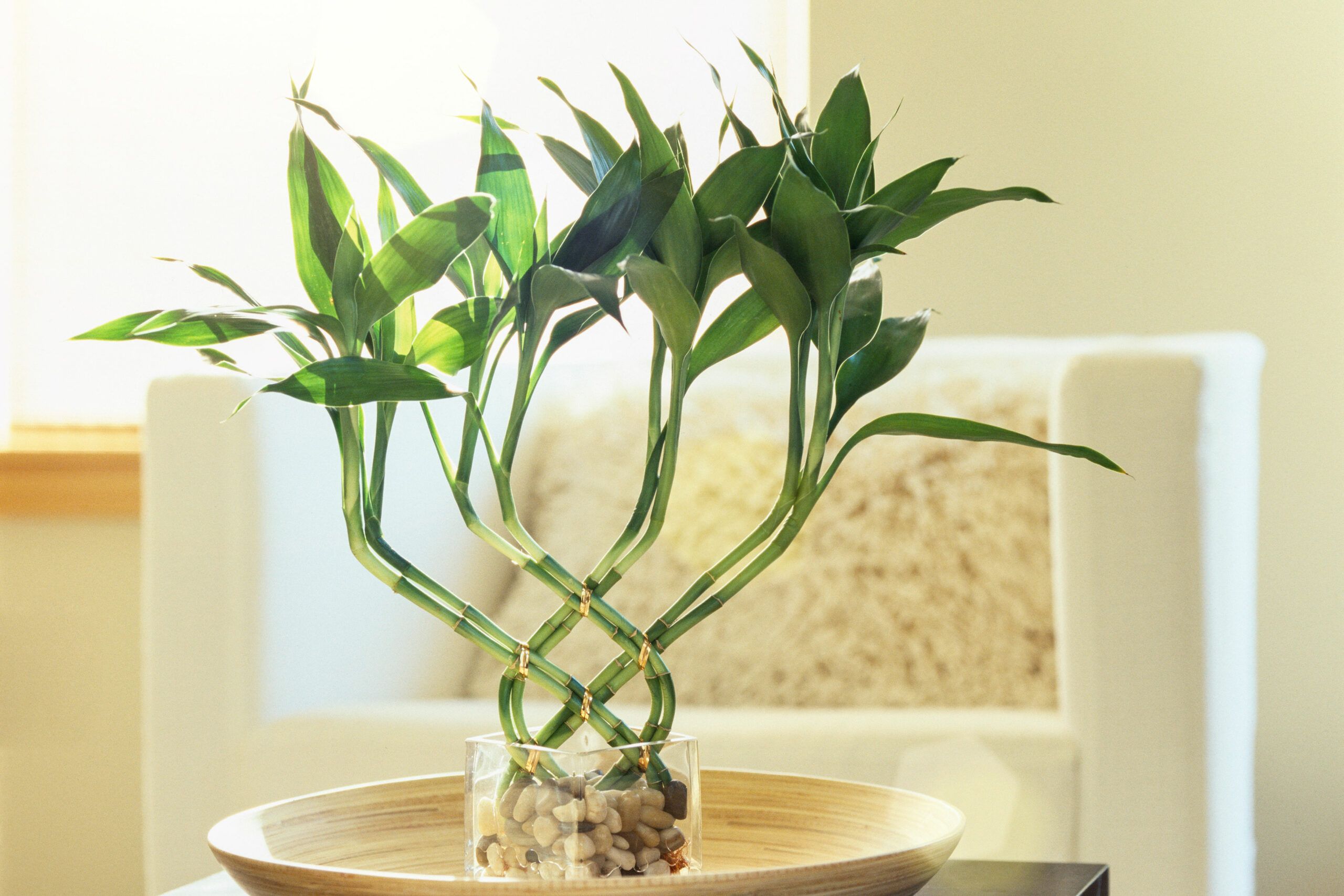
Lucky bamboo is popular for both homes and offices due to its minimal care requirements and symbolic meaning of good fortune in feng shui. Despite its name, it’s not actually bamboo but a species of water lily.
Caring for lucky bamboo is straightforward. Here are a few tips to get you started:
- Grow lucky bamboo in water or well-drained soil.
- If you grow it in water, change the water every two to four weeks.
- Keep the roots covered if growing in water.
- Keep your plant in low, indirect lighting—lucky bamboo requires very little light.
- Water frequently if growing in soil.
It’s popular to arrange lucky bamboo in decorative containers with pebbles or glass beads, making it an attractive and low-maintenance option for tabletops or desks. The fact that it can grow in many different mediums enables you to use it in various creative displays. It also makes for a great gift because it’s said to bring luck.
3. Spider Plant (Chlorophytum Comosum)
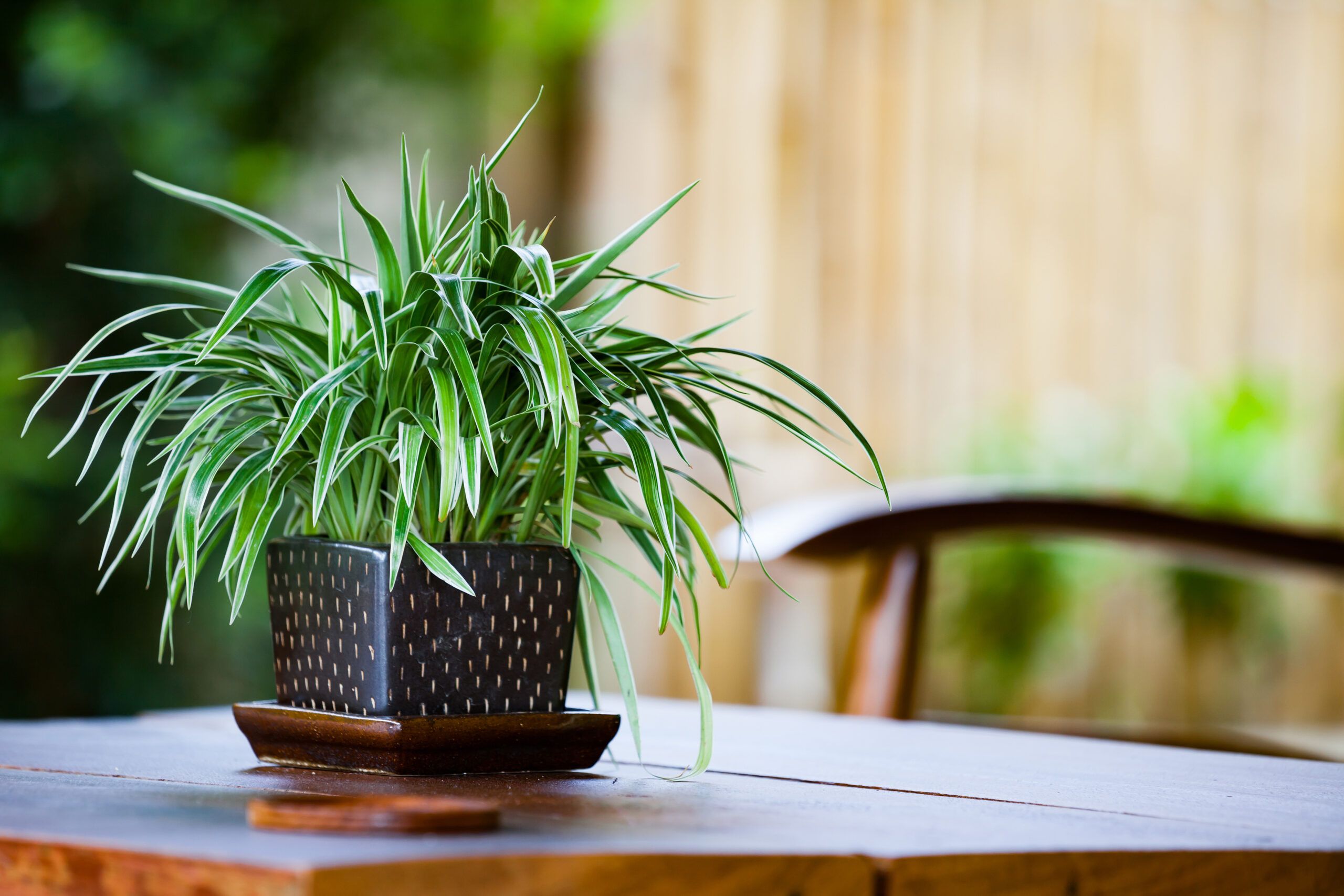
The spider plant is a classic houseplant known for its arching leaves and ability to produce “spiderettes” or baby plants. Its air-purifying qualities make it great for bedrooms or living areas.
To keep your spider plant thriving, consider the following tips:
- Fertilize twice monthly during spring and summer.
- Place your spider plant in indirect lighting.
- Propagate your plant by potting the baby spiders that grow on long stems.
- Repot annually as the plant grows.
- Use well-draining soil.
- Water regularly and evenly around the pot.
Spider plants are particularly good for hanging baskets, which allow their cascading leaves and spiderettes to create a dramatic effect. These plants are also safe for pets, making them popular among animal lovers, and they can enhance your indoor garden’s aesthetic with their vibrant green- and white-striped foliage.
4. Rattlesnake Plant (Calathea Lancifolia)
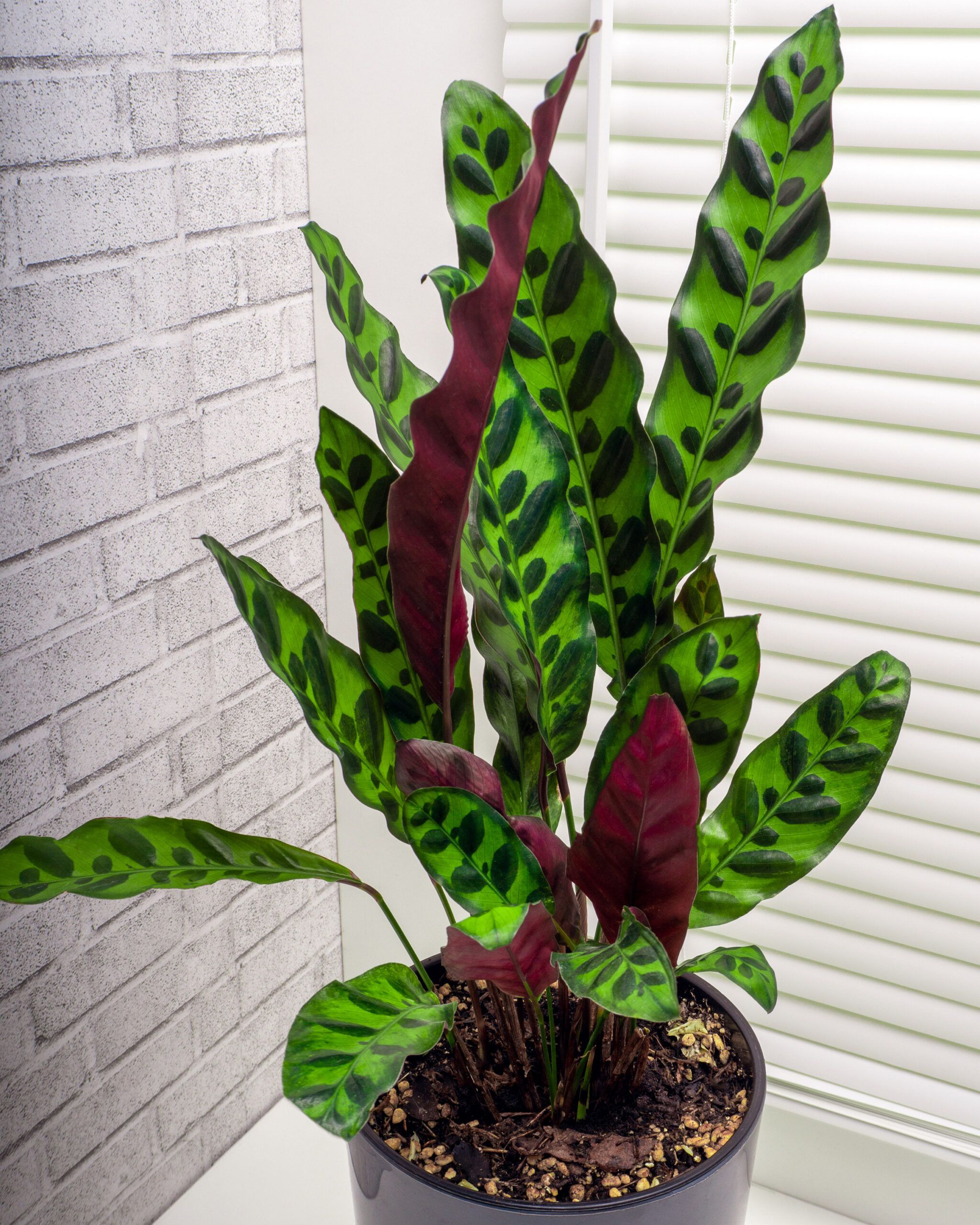
The rattlesnake plant is a striking variety of Calathea known for its distinctive foliage. Its long, slender leaves feature a medium green shade with dark green edges and spots—resembling the pattern of a rattlesnake’s skin—and they fold up at night to conserve energy. The underside of the leaves adds another layer of interest with its purplish-red coloration.
Consider the following tips when taking care of a rattlesnake plant:
- Expect bright yellow-orange blooms in late spring.
- Grow in indirect lighting.
- Maintain high humidity levels.
- Use a mixture of potting soil and sand for good drainage.
- Water lightly and evenly.
Your rattlesnake plant can grow over 30 inches tall with proper care and its unique leaf patterns and movement make it a stunning focal point in any room. The plant also appreciates regular misting, which helps emulate its native tropical environment.
5. Kimberly Queen Fern (Nephrolepis Obliterata)
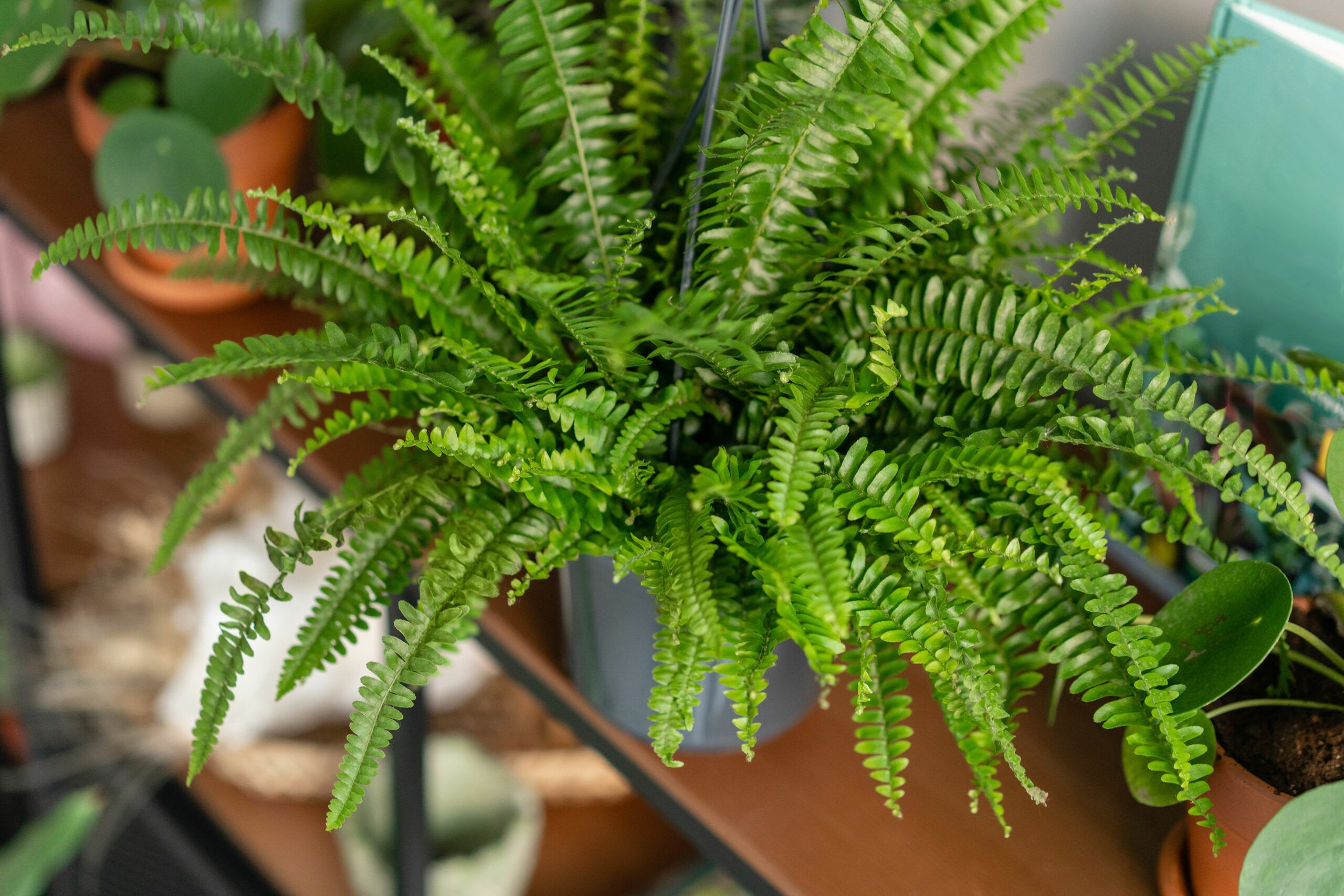
The Kimberly Queen fern, native to Australia, is a regal and robust fern that can thrive both indoors and outdoors in warm climates. Its lush green fronds create a tropical atmosphere and can help increase humidity in dry indoor environments.
Consider the following tips when caring for your Kimberly Queen fern:
- Keep your fern away from drafts.
- Mist it regularly to increase humidity.
- Place your fern in a humid location that’s partial to low light.
- Provide it with moist, well-drained soil.
- Prune it regularly to help maintain its shape and promote healthy frond growth.
- Water thoroughly when the top inch or two of the soil is dry.
This fern is great for bathrooms or kitchens where humidity levels are naturally higher. Its ability to tolerate low-light conditions means it can adapt to various spaces in your home.
6. Marimo Moss Ball Plant (Aegagropila Linnaei)
The marimo moss ball is a unique and intriguing addition to any low-light space. Despite its name, it’s not actually moss but a rare form of spherical algae. These curious green balls are native to lakes in Japan and Northern Europe and have become popular as low-maintenance aquatic “pets.”
Caring for marimo moss balls is simple as long as you do the following:
- Avoid direct sunlight on the glass vessel.
- Change the water every two weeks.
- Gently roll your marimo moss ball occasionally to maintain its shape.
- Keep the water temperature cool.
- Keep your moss ball in regular tap water.
Marimo moss balls can live for decades with proper care, making them a long-lasting and conversation-starting addition to your home. It’s popular to display them in clear glass containers to add a touch of whimsy and natural beauty to any room. Due to their slow growth rate, these algae balls are ideal for those with limited time to dedicate to plant maintenance.
7. ZZ Plant (Zamioculcas Zamiifolia)
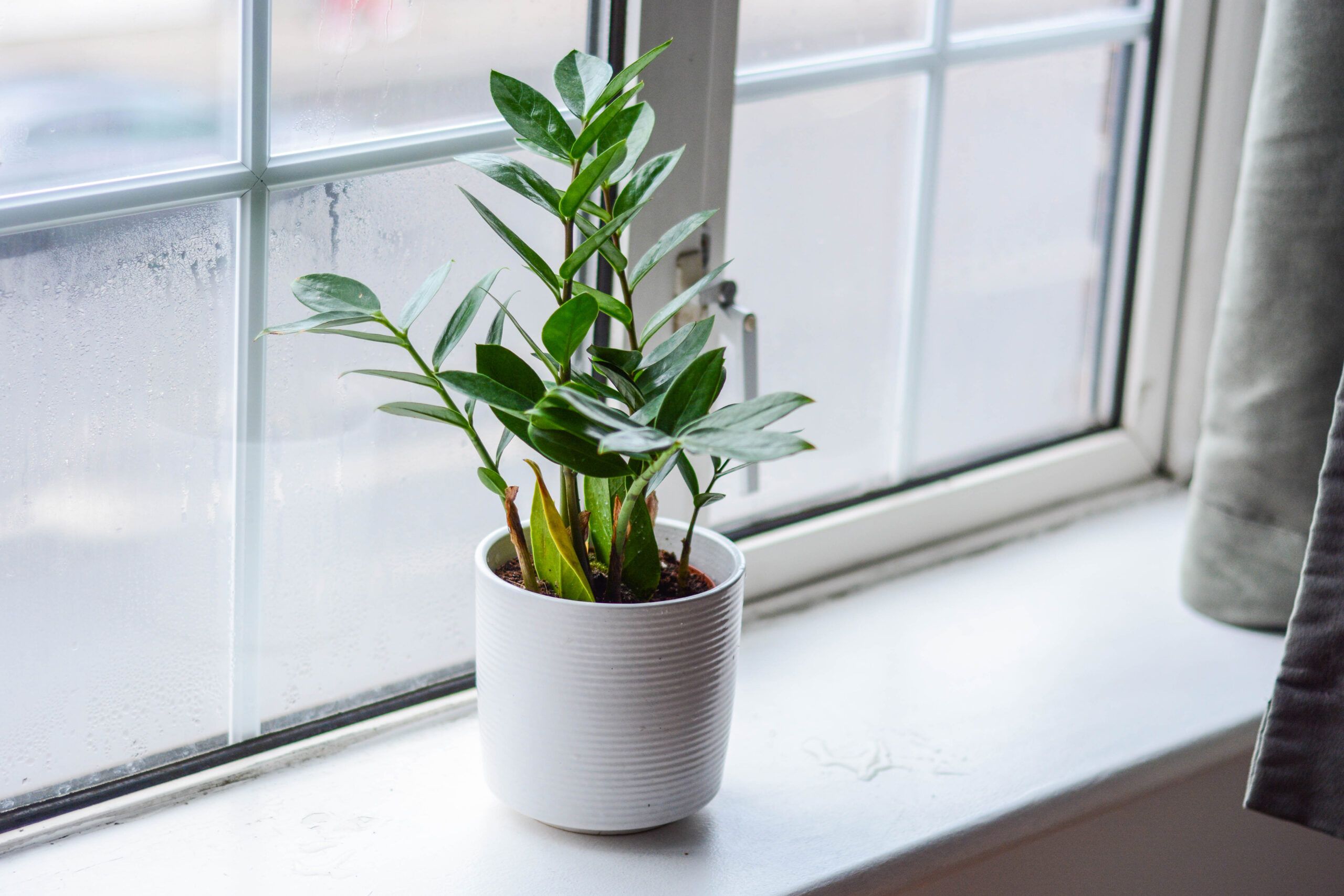
The ZZ plant has gained popularity for its ability to thrive in challenging conditions. Its wide, dark green leaves have a smooth, waxy surface that reflects light, adding a glossy touch to any space.
Key features of the ZZ plant include the following:
- Available in several varieties
- Can be propagated by separating rhizomes
- Drought-tolerant
- Reaches 2–3 feet in height and width
- Thrives in low-light situations
To care for your ZZ plant, use a standard potting mix and water sparingly. These plants are highly tolerant of neglect and can go weeks without water, making them perfect for busy individuals or frequent travelers. The plant can serve as a significant element of your interior decor over time thanks to its architectural foliage.
8. Dumb Cane Plant (Dieffenbachia Amoena)
The dumb cane plant is a versatile and forgiving houseplant that can grow up to 6 feet tall with wide bushy leaves. It’s known for its adaptability to various indoor conditions, making it a popular choice for both homes and offices.
Consider the following tips when taking care of your dumb cane plant:
- Keep it in a warm location.
- Maintain moist soil but avoid overwatering.
- Place your plant in bright, indirect light (though it can tolerate lower light).
- Prune it regularly to control its size and shape.
- Rotate the plant regularly to ensure even growth and to prevent it from tilting toward its light source.
- Use a mixture that’s half potting mix and half peat.
While the dumb cane plant is relatively easy to care for, its sap can cause irritation if you ingest it or if it comes into contact with skin, so keep this plant away from pets and small children.
9. Chinese Evergreen Plant (Aglaonema)
The Chinese evergreen is perfect for beginners or those looking for a low-maintenance plant. This tropical beauty comes in various leaf patterns and colors, adding visual interest to any room.
Consider doing the following to keep your Chinese evergreen thriving:
- Keep temperatures above 60 degrees Fahrenheit.
- Propagate easily with cuttings rooted in water.
- Provide humidity (misting or a pebble tray can help).
- Use well-draining soil.
- Water sparingly, allowing the top inch of the soil to dry between waterings.
Chinese evergreens are known for their air-purifying qualities, making them not only attractive but also beneficial for indoor air quality. Their ability to tolerate low-light conditions makes them great for various spaces in your home.
10. Snake Plant (Sansevieria Trifasciata)
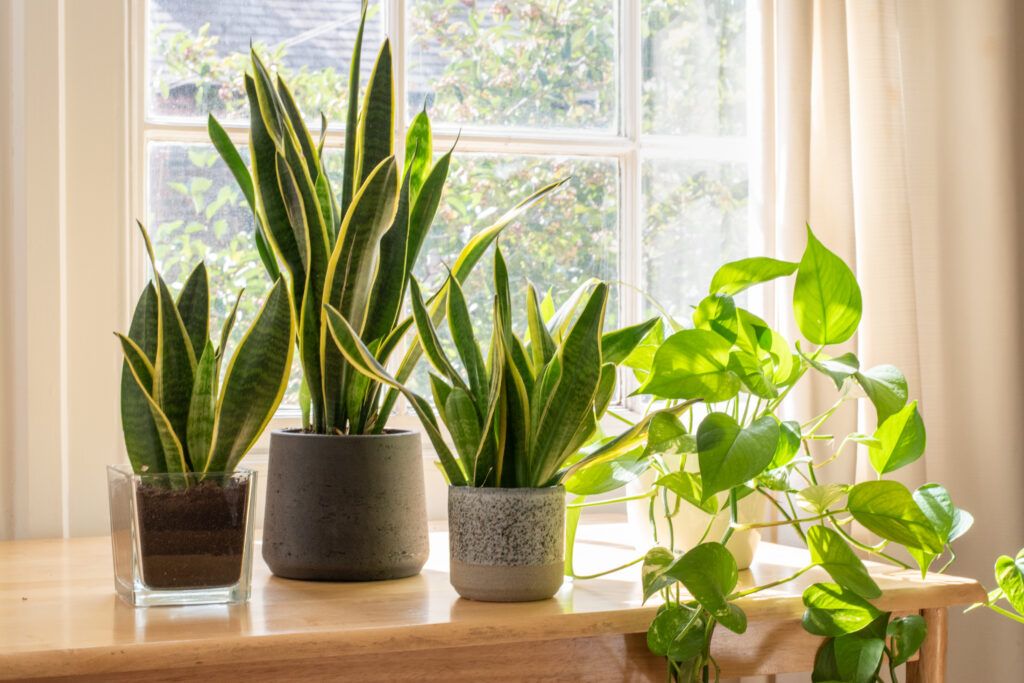
The snake plant, also known as mother-in-law’s tongue, is a hardy, low-maintenance houseplant featuring tall, stiff, swordlike leaves with distinctive variegation. Snake plants can grow up to 3 feet tall, adding vertical interest to any room.
Consider the following tips when taking care of your snake plant:
- Keep your snake plant in a warm environment away from drafts.
- Place it in indirect light (though it can tolerate low-light conditions).
- Use a well-draining potting mix, such as cactus or succulent soil.
- Water sparingly and allow the soil to dry out completely between waterings.
- Wipe the leaves occasionally to remove dust and promote photosynthesis.
While it’s extremely easy to care for a snake plant, make sure to avoid overwatering it as it is prone to root rot. This plant is also known for its air-purifying abilities, making it a great option to improve indoor air quality.
11. Golden Pothos (Epipremnum Aureum)
Golden pothos, also known as devil’s ivy, is a versatile and popular houseplant characterized by its trailing vines and heart-shaped, variegated leaves. It’s great for beginners, as it’s nearly indestructible and can thrive in many indoor environments.
Here are our care tips for golden pothos:
- Maintain moderate humidity (though it can adapt to dry conditions).
- Place your golden photos in bright indirect light (though it can also thrive in low light).
- Trim back the vines regularly to encourage bushier growth.
- Use a standard potting mix with good drainage.
- Water when the top inch of the soil is dry, but avoid overwatering.
Golden pothos is a fast-growing plant that you can easily propagate by cutting and rooting its stems in water or soil. It’s also known for its ability to filter out common indoor air pollutants, making it both a beautiful and functional addition to any space.
12. Peace Lily Plant (Spathiphyllum)
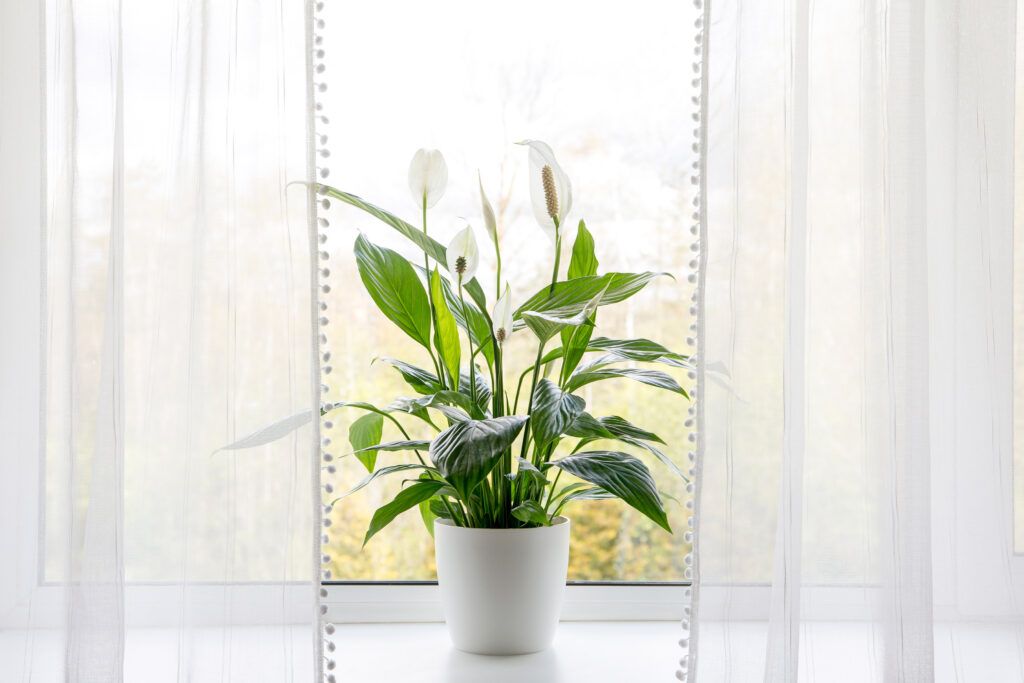
The peace lily is a popular indoor plant known for its glossy, dark green leaves and elegant white flowers. It’s a resilient plant that can adapt to low-light conditions and brighten shady corners in your home or office.
Consider the following tips when caring for your peace lily:
- Keep the soil consistently moist but not waterlogged.
- Mist the leaves regularly to increase humidity.
- Place your peace lily in low to medium indirect light.
- Use a well-draining, all-purpose potting mix.
- Wipe the leaves occasionally to prevent dust buildup and promote health.
It is relatively easy to care for a peace lily. However, don’t be alarmed if its leaves droop—this happens if the peace lily becomes too dry, but its leaves will usually perk up quickly once you’ve watered it. Peace lilies also have air-purifying qualities and can remove toxins from their indoor environment.
13. Philodendron Plant
Philodendrons are a diverse group of plants popular for their lush green foliage and ease of care. They come in various shapes and sizes—from trailing varieties to upright treelike forms—so they can fit into many different indoor settings.
The following tips will help you take care of your philodendron:
- Maintain moderate to high humidity levels.
- Place your philodendron in low to medium indirect light.
- Prune your plant regularly to encourage bushier growth and remove any yellowing leaves.
- Use a well-draining potting mix with added peat moss.
- Water when the top inch of the soil is dry, but avoid overwatering.
Philodendrons are relatively low-maintenance and forgiving, making them an excellent choice for both beginners and seasoned plant enthusiasts. They’re also known for their air-purifying abilities, which can contribute to a healthier indoor environment.
14. Dracaena Plant
Dracaena is a striking indoor plant that comes in various varieties, each with its own unique foliage pattern. Known for its tall cane-like stems and long arching leaves, dracaena adds a touch of tropical flair to any indoor space.
Here are some tips to consider when taking care of dracaena:
- Keep the plant in a warm location and avoid cold drafts.
- Place it in bright indirect light (though it can tolerate low light).
- Prune it regularly to help maintain its shape and encourage new growth.
- Use a well-draining potting mix with peat or pine bark.
- Water your dracaena when the top inch of the soil is dry, but avoid overwatering.
- Wipe the leaves to remove dust and promote healthy growth.
Dracaena is relatively easy to care for and is known for its ability to remove toxins from the air, making it a great choice for improving indoor air quality.
Low Light Plant Considerations for Pets

Many indoor plants can be toxic to cats and dogs. Plants like snake plants, golden pothos, peace lilies, and philodendrons contain toxic substances such as saponins and calcium oxalates, which can cause symptoms in pets that range from mild irritation to severe gastrointestinal distress. Ingesting these plants can also lead to symptoms such as drooling, vomiting, difficulty swallowing, and even more serious complications depending on how much your pet eats.
But that doesn’t mean you need to refrain from having indoor plants if you have pets. There are plenty of pet-friendly plants you can keep in your home. Here’s a full breakdown of which of these plants are toxic or nontoxic to cats and dogs:
| Plant | Toxicity |
| Cast-iron plant (Aspidistra elatior) | Safe |
| Chinese evergreen (Aglaonema) | Toxic |
| Dracaena | Toxic |
| Dumb cane plant (Dieffenbachia amoena) | Toxic |
| Golden pothos (Epipremnum aureum) | Toxic |
| Kimberly Queen fern (Nephrolepis obliterata) | Safe |
| Lucky bamboo (Dracaena sanderiana) | Toxic |
| Marimo moss ball (Aegagropila linnaei) | Safe |
| Peace lily (Spathiphyllum) | Toxic |
| Philodendron | Toxic |
| Rattlesnake plant (Calathea lancifolia) | Safe |
| Snake plant (Sansevieria trifasciata) | Toxic |
| Spider plant (Chlorophytum comosum) | Safe |
| ZZ plant (Zamioculcas zamiifolia) | Toxic |
